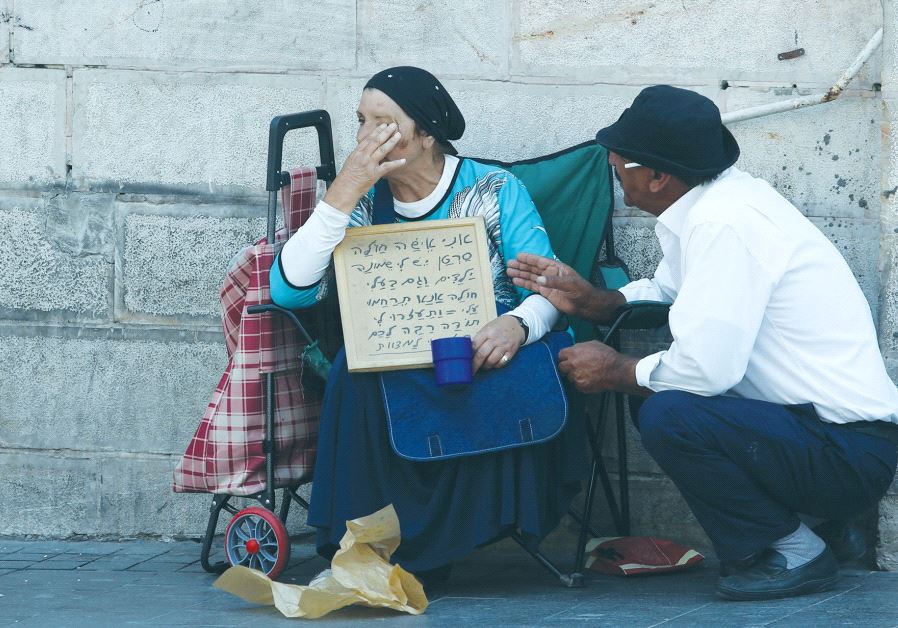Study: 'Israel's economic growth unsustainable, poverty rate highest in OECD'
Taub Center cites government’s failure to reduce poverty through taxes and welfare system.
 A PASSERBY stops to console a poor woman in Jerusalem in 2015.(photo credit: MARC ISRAEL SELLEM)Updated:
A PASSERBY stops to console a poor woman in Jerusalem in 2015.(photo credit: MARC ISRAEL SELLEM)Updated: